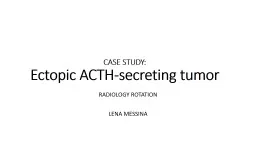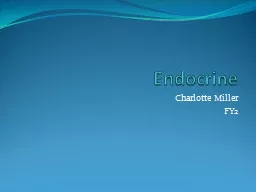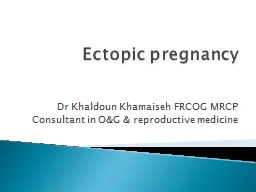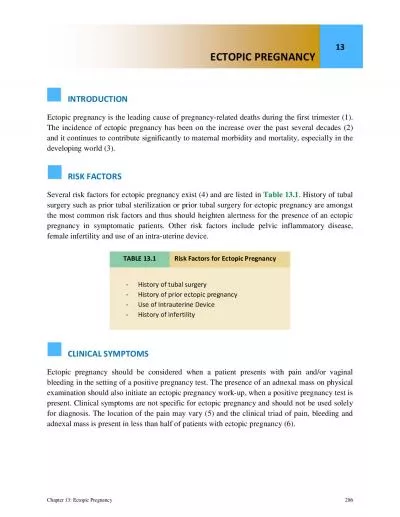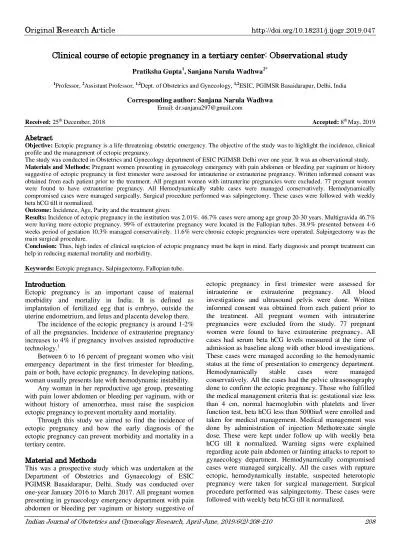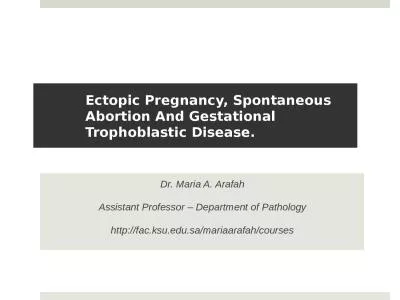PPT-CASE STUDY: Ectopic ACTH-secreting tumor
Author : faustina-dinatale | Published Date : 2018-11-06
RADIOLOGY ROTATION LENA MESSINA Pt is a 38 yo African American F with no significant PMH admitted to General Medicine with hypokalemia 22 to Cushings syndrome
Presentation Embed Code
Download Presentation
Download Presentation The PPT/PDF document "CASE STUDY: Ectopic ACTH-secreting tumor" is the property of its rightful owner. Permission is granted to download and print the materials on this website for personal, non-commercial use only, and to display it on your personal computer provided you do not modify the materials and that you retain all copyright notices contained in the materials. By downloading content from our website, you accept the terms of this agreement.
CASE STUDY: Ectopic ACTH-secreting tumor: Transcript
RADIOLOGY ROTATION LENA MESSINA Pt is a 38 yo African American F with no significant PMH admitted to General Medicine with hypokalemia 22 to Cushings syndrome She reports progressive swelling weight gain and acne over the course of the past year She has been amenorrhoeic for gt6 months Earlier labs showed hypothyroidism and hyperprolactinemia and the patient was started on levothyroxine and bromocriptine She had multiple prior admissions for hypokalemia She denies headaches vision changes or urinary symptoms. Danforth’s. Obstetrics and Gynecology. Tenth edition. Ectopic pregnancy, the implantation of a fertilized ovum outside of the endometrial cavity. a leading cause of life-threatening first-trimester morbidity. Intervista a Federico . Cappuzzo. Background:. Programmed death-ligand 1 (PD-L1) expression on tumor cells (TC) or tumor-infiltrating immune cells (IC) is associated with OS, PFS and ORR in pts with advanced NSCLC treated with atezolizumab (anti-PDL1, MPDL3280A; Spigel et al, Spira et al, ASCO 2015), indicating that PD-L1 expression on both TC and IC is important for anti-tumor immunity. However, these 2 distinct expression patterns suggest the existence of previously unidentified NSCLC subtypes with distinct immunologic profiles. . Charlotte Miller. FY2. The PITUITARY. Growth Hormone. FSH/LH. ACTH. TSH. Prolactin. ADH. Oxytocin. Cushings. Syndrome – persistent and inappropriate glucocorticoid excess with systemic symptoms and signs. We thank Jill Smith for support of poster preparation and graphics; the Mayo Immunochemical Laboratory for assay assistance; and the Mayo research nursing staff for implementing the protocol. Supported in part via R01 DK073148, and P30 DK050456 (Metabolic Studies Core of the Minnesota Obesity Center) from the National Institutes of Health (Bethesda, MD) and by UL1 TR000135 from the National Center for Advancing Translational Sciences (NCATS). . Nacogdoches TX. HAC - Two Types. PDH - . Pituitary Dependent Hyperadrenocorticism. . 80-85%. ADH - . Adrenal Dependent Hyperadrenocorticism. 15-20%. . Signalment. #1 Dog Breed for . Cushing's . and . IHeterotopic pregnancy is a rare condition more commonly seen in populations at risk for ectopic pregnancy or those undergoing fertility treatments Heterotopic pregnancy is the simultaneous coexistenc Ali Al Khader, M.D.. Faculty of Medicine. Al-Balqa’ Applied University. Email: ali.alkhader@bau.edu.jo. Lecture outline. Adrenocortical hyperfunction (Hyperadrenalism):. -Hypercortisolism (Cushing syndrome). . Khamaiseh. FRCOG MRCP. Consultant in O&G & reproductive medicine. Presence of pregnancy outside the uterine body. Incidence 1-2% . It used to be a significant cause of maternal mortality due to . 127 pISSN 2384-1095eISSN 2384-1109 Department of Radiology, Jeju National University Hospital, Jeju-si, KoreaDepartment of Pathology, Jeju National University Hospital, Jeju-si, Korea www.i-mri.org 12 TABLE 13.1 Risk Factors for Ectopic Pregnancy 13 Chapter 13: Ectopic Pregnancy287 ANATOMIC LOCATION OF ECTOPIC PREGNANCYMostectopic pregnancies are located along the course of the fallopia O riginal R esearch A rticle 10.18231/j.ijogr.2019.04 7 Indian Journal of Obstetrics and Gynecology Research, April - June , 2019;6( 2 ) :208 - 210 208 Clinical course of ectopic pregnancy in a ter Dr. Maria A. Arafah. Assistant Professor . –. Department of Pathology. http://. fac.ksu.edu.sa. /. mariaarafah. /courses. Objectives . At the end of this lecture, the student should be able to:. Understand the pathology and predisposing factors of ectopic pregnancy and spontaneous abortion.. Introduction:. The blastocyst normally implants in the endometrial lining of the uterine cavity. Implantation anywhere else is considered an ectopic pregnancy. It is derived from the Greek ektopos—out of place . . MD. Agenda. A diagnosis of suspected Cushing . disease. . involves . 3 major . steps:. C. onfirmation . of . hypercortisolism. D. ifferentiation . between . corticotropin. . independent and . corticotropin.
Download Document
Here is the link to download the presentation.
"CASE STUDY: Ectopic ACTH-secreting tumor"The content belongs to its owner. You may download and print it for personal use, without modification, and keep all copyright notices. By downloading, you agree to these terms.
Related Documents

